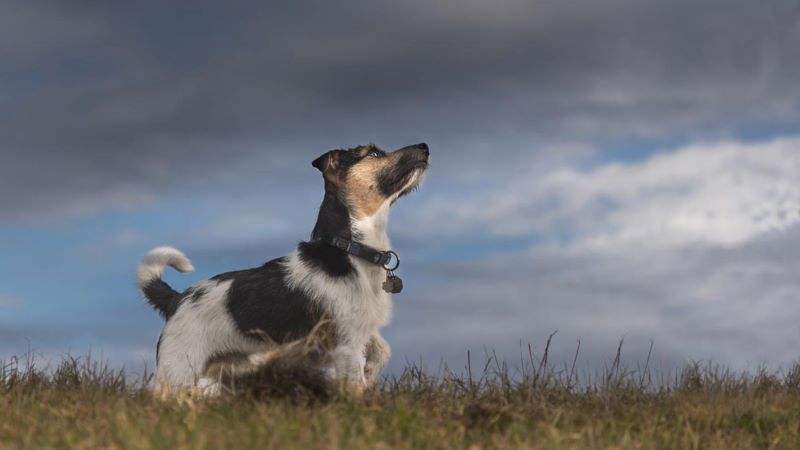The last week of June is Lightning Safety Awareness Week. Imagine my surprise when I googled lightning safety and found tons of info on how to protect your human self in a thunderstorm, but not much on how to safeguard your animals! Our pets can be at great risk in a thunderstorm, if they are not able to find appropriate shelter, or if they become frightened and cannot calm down. Let’s talk strategies for keeping your pets safe should lightning strike.
One of the most important things to remember when it comes to your pets, is that they cannot tell you when they are afraid or worried, nor do they understand you telling them they are safe inside. Their fear is irrational, therefore there is almost no way for you to know how they will react. Being prepared is key when it comes to your pet’s safety in a storm.
- Bring your outside dog inside. Even under a shelter, your dog is not safe from a lightning strike, and if he becomes afraid, he could hurt himself or others trying to get away from the storm. Dr. Patty Khuly can vouch for the importance of protecting your dog from himself as she has seen fractured claws, lacerations, and even broken bones and teeth as a result of storm phobia. She talked to board certified veterinary behaviorist Dr. Lisa Radosta to gather some tips to combat storm phobia and shares them in her blog Nine Ways to Handle Your Dog’s Fear of Thunderstorms.
- Act now. If your young dog is showing signs of storm phobia, begin building your arsenal now. Fear of storms in dogs is a progressive behavioral disease. This storm season your dog may be shaking and hiding under a bed, but next season he may totally lose control. Know what to do ahead of time.
- Make his crate available. Dogs are naturally cave dwelling animals, and hiding (as in a cave) is a natural psychological defense for them. In fact, introducing your dog to the concept of a crate at a young age is good for all kinds of escapes. In her post, Dogs Aren’t Den Animals So Why Do We Crate Them?, Dr. Patty Khuly gives a convincing argument for the practicality of the crate. “And because crates provide safety from foreign body ingestion, a sense of security when it thunders, a place to run when the toddlers get rough, the ideal location for post-op convalescence, a vehicle for safe transport, and the ultimate housetraining tool––among other highly defensible uses.”
- Compete with the noise. Play soothing music or a sound machine to drown out the rumbling of thunder. Check out the website, Through a Dog’s Ear, for canine music therapy. There are dozens of options for calming and preventing noise phobia. If your dog is also afraid of the booming of fireworks, preventative music would be good to look into before July 4th rolls around.
- Use a diffuser. It works for getting our littles to sleep through the night, why not try it with your dog? For mild cases of storm phobia, lavender oil or Dog Appeasing Pheromone (marketed as D.A.P.) may do the trick.
- Try a Storm Defender Cape. The cape has a special lining that eases anxiety and produces a calming effect.
Your dog’s behavior during a thunderstorm may only be frustrating and disruptive, but just because he is not totally freaking out doesn’t mean he is not suffering. It is important to learn some coping tools, as his anxiety may only escalate. If your dog’s behavior during a storm is already out of control, call your vet. He may need medication to get his anxiety under control.

